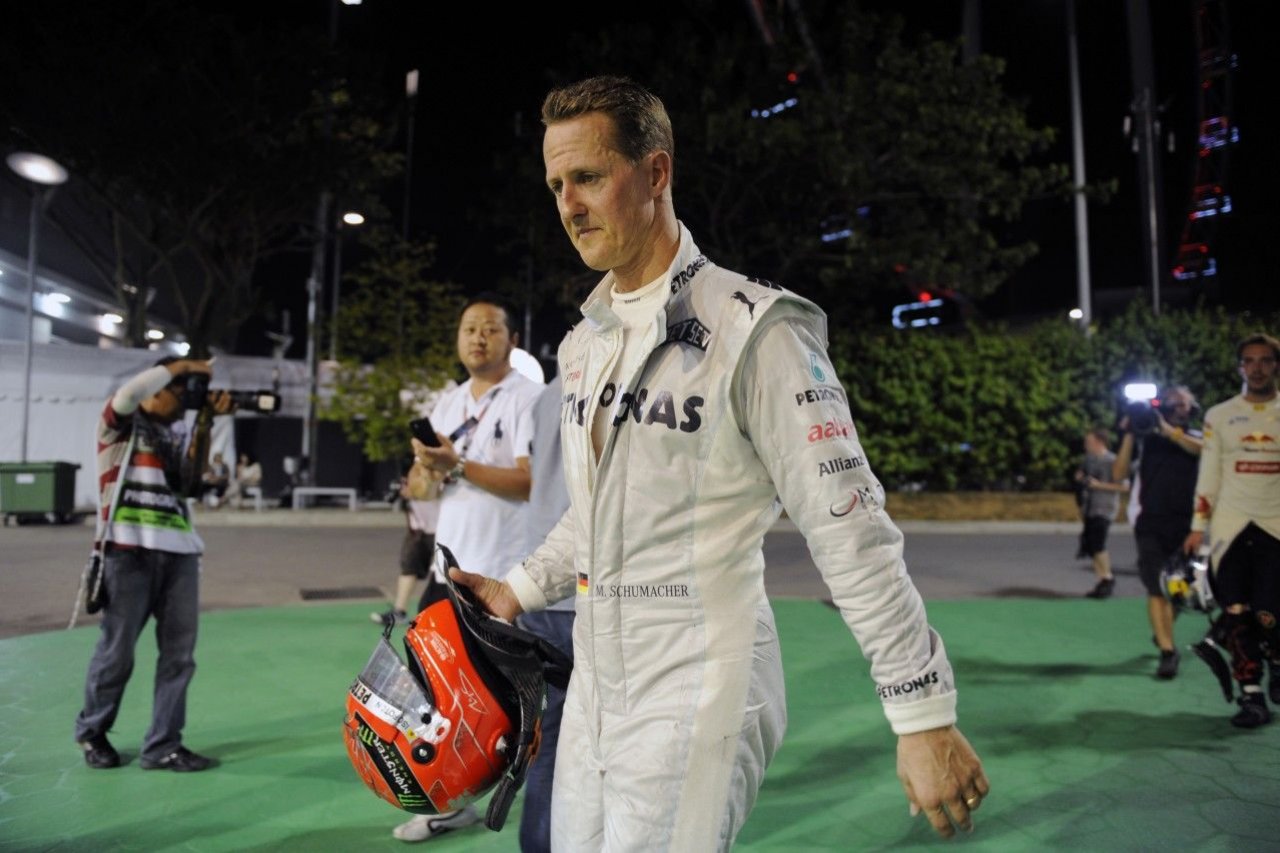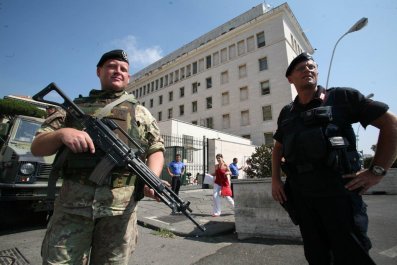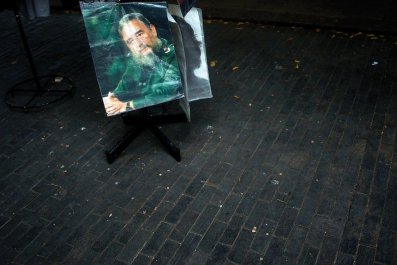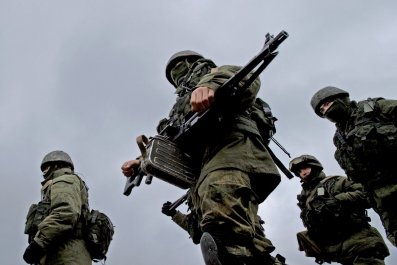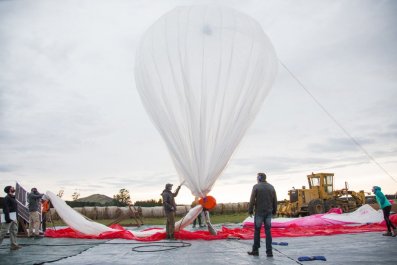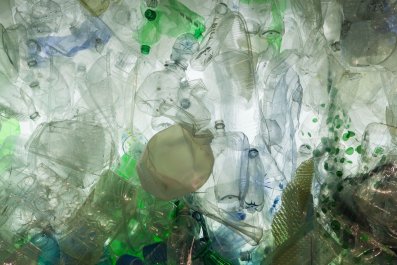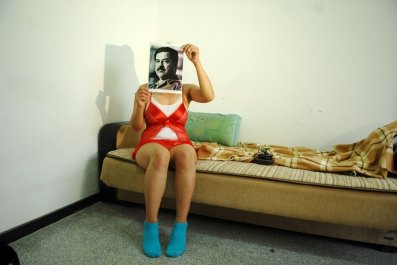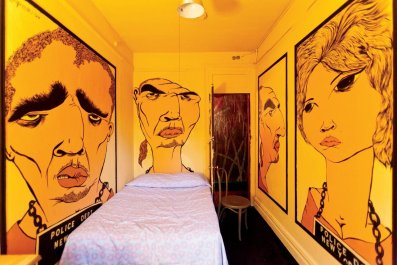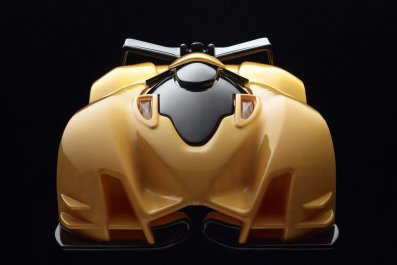At the moment of impact, in a crash whose catastrophic effects are still being manifested, the most successful Formula One (F1) driver of all time was proceeding at a speed of 12 mph. Perhaps slightly faster, although no one knows for sure.
Tuesday, April 8, marked the 100th day since Michael Schumacher fell while skiing in Méribel, France. The seven-time world champion, whose Ferrari engines regularly flirted with speeds of 190 mph while navigating the straightaways at Le Mans and Nürburg, was proceeding at a leisurely pace on a sunswept Sunday morning when his skis struck a boulder off-trail. The German native was catapulted headfirst and tossed 34 feet before his helmet struck another rock, and split in two.
That was on December 29, five days before the retired racer's 45th birthday. Schumacher, who had exited the sport in 2012 after the most decorated career in Grand Prix history, had been skiing with the younger of his two children, 14-year-old son Mick. By day's end "Schumi," as he is known to a global legion of fans, would lose consciousness, an abyss from which he has yet to return. He currently lies in a coma at Grenoble University Hospital in France, suspended indefinitely between life and death, a prisoner of irony.
"We are and remain confident that Michael will pull through and wake up," Schumacher's family said in a statement last month. "Michael has suffered severe injuries. It is very hard to comprehend for all of us that Michael, who had overcome a lot of precarious situations in the past, has been hurt so terribly in such a banal situation."
From banal the situation quickly escalated to bizarre. Schumacher was reportedly talking to the rescue team that put him into the helicopter, but doctors put him into an induced coma to combat swelling around the brain, and since then he has remained unconscious. In Europe, where Schumacher's celebrity rivals that of LeBron James or Lionel Messi, fans were ravenous for updates on his condition, but none were forthcoming. When family spokeswoman Sabine Kehm did at last meet the media, she reported that an unnamed journalist had attempted to enter Schumacher's fifth-floor intensive-care room disguised as a priest.
Meanwhile, with meager bits of information being released about Schumacher's condition, Dr. Gary Hartstein, an American physician who was F1's medical delegate from 2005 to 2012, has taken it upon himself to go all Sanjay Gupta on Schumi's prognosis via the blogosphere. "As time goes on, it becomes less and less likely that Michael will emerge to any significant extent," Hartstein wrote on his blog, A Former F1 Doc Writes.
Last month, speaking to The New York Times, Hartstein was equally grim. "After eight weeks, if there's no sign of waking," said Hartstein, who practices in Belgium, "what most people would do is unplug."
Statistically, Schumacher is without equal. From his first F1 start at the Belgian Grand Prix in 1991 to his last at the 2012 Brazilian Grand Prix, Schumacher lapped the field. No drivers who ever lowered themselves into a F1 chassis have won more world championships (7). His 91 career victories are 40 more than the nearest challenger, Alain Prost. In fact, Schumacher not only has taken the most checkered flags since the sport's inception in 1950; he also lays claim to the most second-place finishes (43).
What David Beckham has been to soccer across roughly the same era, Schumacher was to Grand Prix racing. The difference? Becks never strode out onto a pitch weighing death as a possible outcome. "I have a theory why women like racing drivers," James Hunt (Chris Hemsworth) tells Niki Lauda (Daniel Bruhl) in Rush, a movie that examines the rivalry of two 1970s-era F1 world champions. "It's our closeness to death. You see, the closer you are to death, the more alive you feel, the more alive you are."
It is that fuel, that concoction of exhilaration and sudden mortality, that has always given F1 drivers rock-star status.
On May 1, 1994, Schumacher was drafting behind Ayrton Senna at the San Marino Grand Prix in Imola, Italy. This was perhaps the sport's most intense budding rivalry. The charismatic Brazilian, 34, had already won three world championships at that point, but Schumacher, then 25, had won the season's first two grands prix. Here in the third the pair were running one-two, with Schumacher just fractions of a second behind.
On lap 7 Senna's car failed to navigate a left-hand turn, careening off the track and head-on into a concrete retaining wall. Schumacher's vehicle was so close that it had already passed the spot by the time Senna's Williams FW 16 made impact.
Later that day, not long after Schumacher took the checkered flag, Senna was pronounced dead. Schumacher would go on to win his first F1 world championship that year.
The following year, Schumacher won his second world championship and wed fellow Rhinelander Corrina Betsch. Handsome, happily married and singularly successful, Schumacher also grew to be rich. Very much so. His wealth has been estimated at approximately $800 million, which is greater than that of Michael Jordan or Tiger Woods or even Beckham. The Schumacher family estate is a 7,000-square-foot mansion on the banks of Lake Geneva in Switzerland that has its own underground garage and gas station.
Since the accident, Schumacher's family, which includes his father, Rolf, and younger brother, Ralf, himself a retired F1 driver, have been making the 150-mile round-trip from Lake Geneva to the hospital to keep vigil Last Friday Kehm, the family spokeswoman, told reporters that Schumacher "shows moments of consciousness and awakening" though what that portends in term of a recovery is unknown.
"If Michael smiles when a member of his entourage talks to him, reproducibly and consistently on at least a few occasions," said Dr. Hartstein, "this then would be a minimally conscious state. And that is about the best news we could possibly get right now."
Senna's vehicle was equipped with an onboard camera that recorded his fatal crash. Schumacher was wearing a helmet-cam when he crashed, the video of which survived. Two F1 legends, two crashes at vastly different speeds, two disastrous but dissimilar results, at least in the short term.
Schumacher, a feeding tube in his stomach and a ventilator in his airway, lies in limbo, night and day, on an air mattress in Grenoble, France. He has lost approximately 25 percent of his body mass since the accident and now weighs roughly 120 pounds. Closer to life or death, no one can say.
"Miracles happen, of course, and as a wealthy man he has the best care money can buy," a friend recently told SPEED, a motor sports site. "But all the money in the world cannot fix what has happened to him."
Four years ago, when he was still racing, Schumacher, who also has a 17-year-old daughter, Gina Marie, told a German magazine that he had made a will. "But it is less about Formula One," he explained, "but because of the things that can happen in everyday life."



